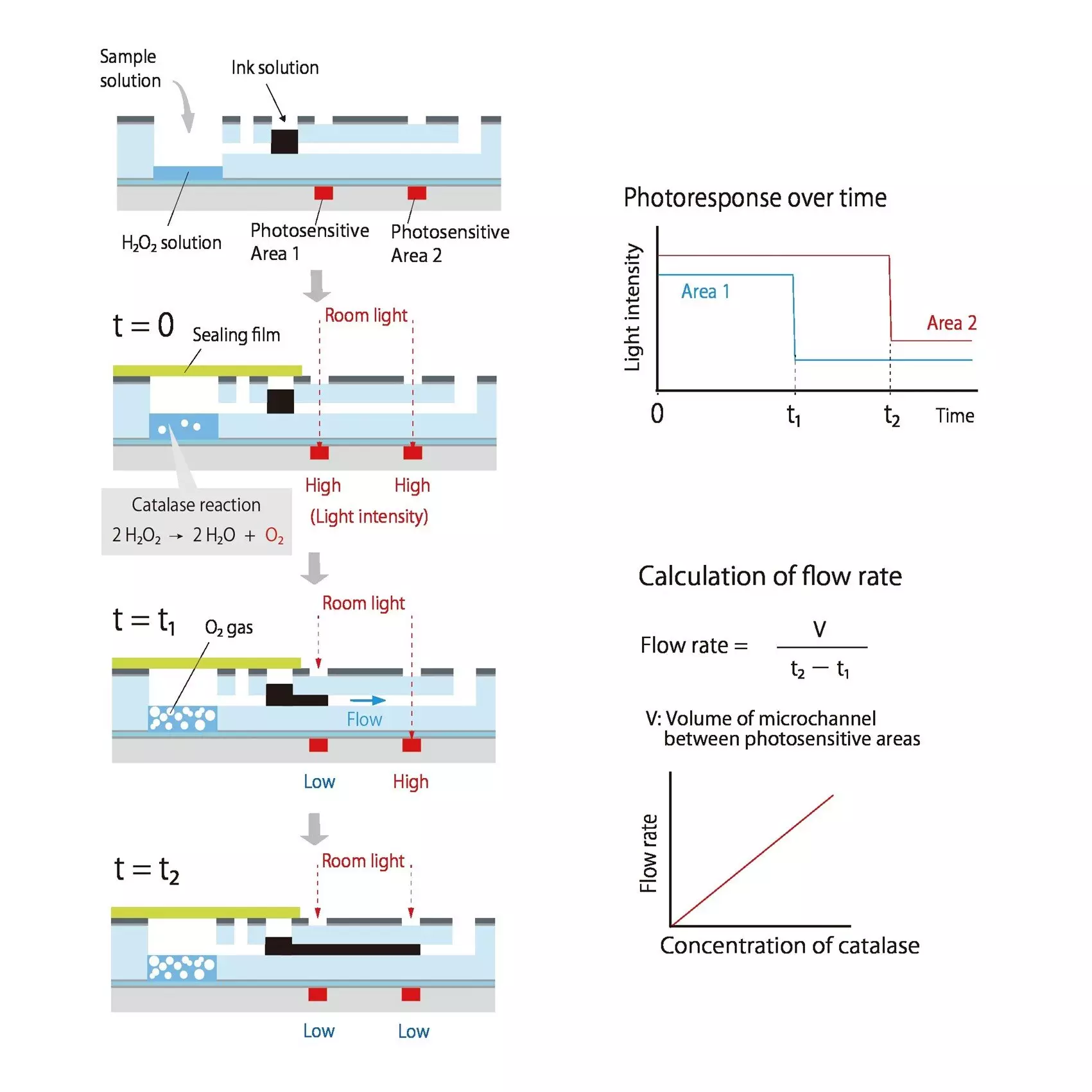A team of researchers from Tokyo Metropolitan University has developed a groundbreaking micro total analysis system that allows for the quantification of target chemicals in a microfluidic chip without the need for pumps, tubes, or expensive detectors. This innovative system works by utilizing a compound that reacts with other chemicals to produce a gas, which then pushes ink along a connected chamber in a channel. By integrating built-in light detectors, the flow speed can be measured, enabling the accurate measurement of the original chemical. This portable device opens up new possibilities for bedside, quantitative clinical analysis.
Microfluidics is a cutting-edge technology that enables precise chemistry to be performed using significantly smaller amounts of chemicals. By etching thin channels and chambers into a compact chip that can easily fit into the palm of your hand, microfluidics allows for the manipulation of microliter amounts of liquid across a parallelized array of reaction conditions. This approach not only saves time and cost but also benefits the environment by reducing chemical waste.
Unlike traditional micro total analysis systems that rely on bulky pumps, tubes, and expensive light sources and detectors, the new system developed by Associate Professor Hizuru Nakajima’s team eliminates the need for additional hardware. In this innovative approach, a compound of interest produces a gas that helps drive ink along a connected channel. Light detectors printed along the channel measure the flow speed by detecting the blockage of room light by the flowing ink. This cost-effective and simple detection method opens up new possibilities for streamlined chemical analysis.
The researchers demonstrated the effectiveness of their system by measuring the concentration of C-reactive protein (CRP), a protein associated with the immune system’s response. By adding a CRP-containing solution to a small chamber and introducing nanoparticles coated with CRP antibodies and catalase, the team was able to accurately detect CRP concentration in human serum. The new microfluidic chip showed good agreement with traditional, hardware-intensive methods, even in the presence of common proteins like immunoglobulin G (IgG) and human serum albumin.
The portability and efficiency of the new microfluidic chip developed by the Tokyo Metropolitan University team are expected to drive further applications of micro total analysis systems in clinical diagnosis at the bedside and environmental analysis in the field. This groundbreaking technology has the potential to revolutionize chemical analysis by providing a more cost-effective, portable, and user-friendly solution for quantitative chemical analysis.



Leave a Reply